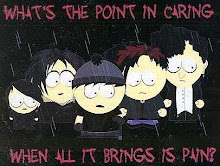Transylvania (Romanian: Ardeal or Transilvania; Hungarian: Erdély; German: Siebenbürgen, is a historical region in the central part of Romania. Bounded on the east and south by the Carpathian mountain range, historical Transylvania extended in the west to the Apuseni Mountains; however, the term frequently encompasses not only Transylvania proper, but also the historical regions of Crişana, Maramureş, and (Romanian) Banat.
Transylvania was once the nucleus of the Kingdom of Dacia (82 BC - 106 AD). In 106 AD the Roman Empire conquered the territory and after that its wealth was systematically exploited. After the Roman legions withdrew in 271 AD, it was overrun by a succession of tribes, which subjected it to various influences. During this time areas of it were under the control of the Visigoths, Huns, Gepids, and Avars.
Transylvania was first referred to in a Medieval Latin document in 1075 as ultra silvam, meaning "beyond the forest" (ultra (+accusative) meaning "beyond" or "on the far side of" and the accusative case of sylva (sylvam) meaning "wood or forest"). Transylvania, with an alternative Latin prepositional prefix, means "on the other side of the woods". The German name Siebenbürgen means "seven fortresses", after the seven (ethnic German) Transylvanian Saxons' cities in the region (Kronstadt, Schäßburg, Mediasch, Hermannstadt, Mühlbach, Bistritz and Klausenburg).

Areas in blue are where the german colonists settled
In the 11th century Hungary took possession of Transylvania, a territory that probably had a mixed but basically Romanian population. After the occupation the Hungarian crown encouraged immigration in order to strengthen against outside invasion. Most important was the settlement of the Szeklers and the Germans, who came in the 12th century.
The colonization of Transylvania by Germans was begun by King Géza II of Hungary (1141–1162). For decades, the main task of the German settlers was to defend the southeastern border of the Kingdom of Hungary. Although the primary reason for Géza II's invitation was border defense with the Szeklers against invaders, Germans were also sought for their mining expertise and ability to develop the region's economy. The Germans that moved to Transylvania came from Luxembourg, the Moselle River and Rhineland, with others from Thuringia, Bavaria, and even from France, but will be known from then on as Saxons (Romanian: Sasi). In 1211 King Andrew II of Hungary invited the Teutonic Knights to settle and defend the Burzenland in the southeastern corner of Transylvania. To guard the mountain passes of the Carpathians (Karpaten) against the Cumans, the knights constructed numerous castles and towns, including the major city of Kronstadt (Braşov). Alarmed by the knights' rapidly expanding power, in 1225 Andrew II expelled the Order which henceforth relocated to Prussia in 1226, but the german colonists remained. Saxons held a privileged status with the Hungarian nobles and Szeklers of Transylvania and had rights, administrative and religious autonomy and also obligations towards the kings of Hungary.

Bran Castle
The Mongol invasion of 1241-42 devastated much of the Kingdom of Hungary. Although the Saxons did their best to resist, many settlements were destroyed. In the aftermath of the invasion, many Transylvanian towns were fortified with stone castles and an emphasis was put on developing towns economically. Many towns were defended by Kirchenburgen, or fortified churches with massive walls. The rapid expansion of cities populated by the Saxons led to Transylvania being known in German as Siebenbürgen and Septem Castra in Latin, referring to seven of the fortified towns.
Along with the (largely Hungarian) Transylvanian nobility and the Szeklers, the Transylvanian Saxons were members of the Unio Trium Nationum, or "Union of the Three Nations", signed in 1438. This agreement preserved political rights for the three inclusive groups and excluded the largely Romanian peasantry from political life.
Next: just very few pictures of the beautifull medieval monuments left by the saxons. For a complete list of castles in Romania or fortified churches in Transylvania .








Niciun comentariu:
Trimiteți un comentariu